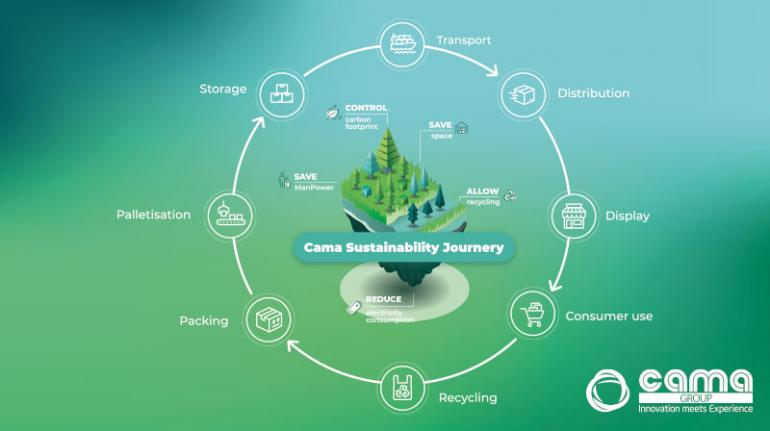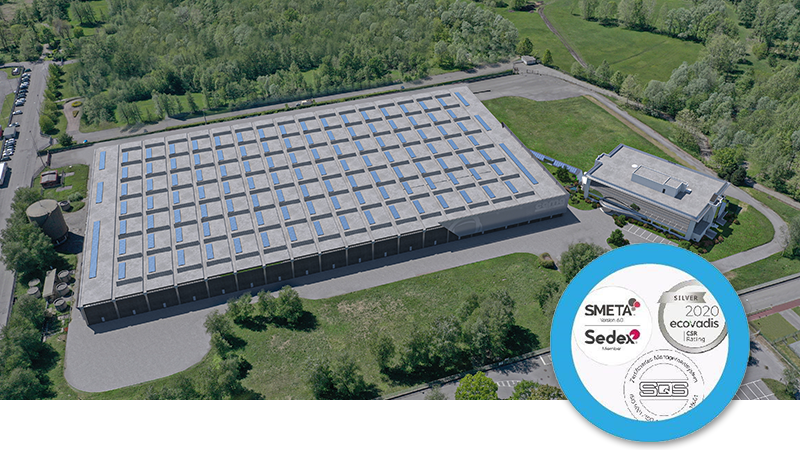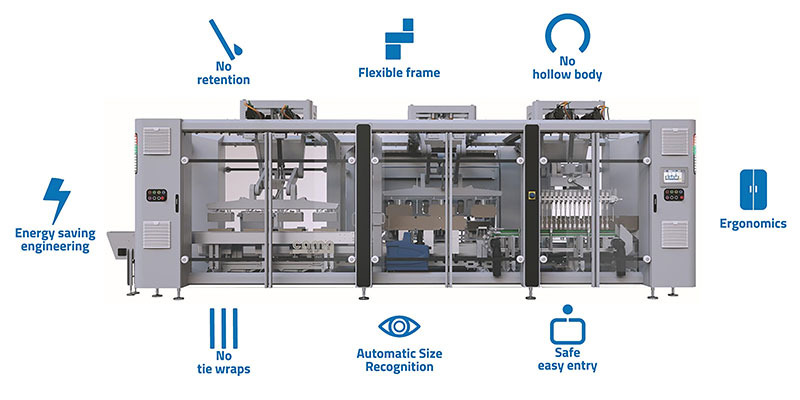What matters is the overall picture

Mark Brooker, Director of Cama UK Ltd., looks into sustainability in the packaging industry and explains that it’s not just about the machines, it’s about the entire ethos of a company and what it can deliver to its customers.
With all the talk of operational data and digital transformations dominating today’s headlines, engineers must not lose sight of the bigger picture; especially regarding other operational targets and programmes, one of which is sustainability. In a strictly "remote" interview, Mark Brooker, Branch Manager Cama UK Ltd. tells us about it.
Sustainability: a passing fashion or conscious commitment?
It is above all a value to be cultivated and a commitment that all of us, in various ways, have assumed. Sustainability is not, and never was, a short-term fad. It should be considered as an ongoing company-wide programme that forms, if not the basis, then a primary deciding input, into some of your biggest operational decisions. Companies must learn to strike a balance - ensuring that their business aspirations do not impact the guidelines and targets of sustainability programmes. We all have a responsibility as individuals, teams, companies and corporations to ensure more mature behaviour in this area.
What are the Cama Group's choices and investments in this regard?
Cama Group has a wide and articulated cradle-to-grave sustainability programme. We don’t just look at our machines and how they operate, we look at the bigger picture, which includes everything from our premises to a product’s end of life. It is no coincidence, for example, that our new headquarters in Italy has been redesigned according to energy saving criteria (intelligent lighting systems, advanced HVAC, glare & shading solutions and solar panels on the roof). We also deploy e-mobility solutions, which not only cut down pollution, but also give employees and visitors places to charge electric cars.
I would also like to mention, in this context, the certifications obtained by Cama over the years, which attest to its virtuous behaviour: from UNI EN ISO 9001/UNI EN ISO 14001/OHSAS 18001, to that issued by the Swiss certification body SQS for quality and management systems or, again, the ISO certifications on the quality of processes up to the "Silver Rating" obtained by EcoVadis, the international platform that evaluates corporate social responsibility on a global level, and finally the SMETA 6.0 audit (part of Sedex) conducted by Cama in October 2018, which is based on the assessment of various company areas (Health and Safety, Labour Standards, Environment, Professional Ethics).

A "green" headquarters and international certifications are distinguishing factors for the entire Group, but what counts is the ability to translate sustainable concepts and procedures in the design of technologically advanced machinery...
Sure, after all, it is the in-field operations that can potentially have the biggest impact.. Indeed, a machine’s design and its subsequent operational life have huge roles to play in sustainability programmes. For the last 10 years a key element in the design of our secondary packaging solutions is low energy use. It’s all to do with designing out inefficiencies. We keep pneumatics to an absolute minimum and use low-energy drives wherever possible; but cutting power consumption is just half the story.
Sustainable design means looking at the physical designs of the machines, as we have done with our BTG (Breakthrough Generation) and Monobloc machines, which utilise integrated cable-management solutions. These not only cut down on cabling, but also remove the need for many of the ancillaries, such as clips and fastenings. Co-located control panels also reduce the need for extensive wiring looms, as does our integrated in-house developed robotic platform, which does not require a separate controller… simply running off the primary PLC.
We therefore worked on simplifying the operation of the machine and the internal access, which among other things means cut the clean-in-place routines down, not just in terms of time, but also water use and cleaning consumables. In the same vein, sealed for life bearings and self-lubricating chains and guides also cut maintenance and consumables.

How can the ongoing digital transformation and IIoT generate more sustainable business processes?
A primary target of connected and data-capable control solutions is the attainment and management of KPIs, most of which are performance and quality based. By connecting our machines to wider-enterprise management solutions, monitoring suites can spot peaks and troughs and address them before they have any impact on the KPI metrics. Although this is a very operational-centric approach, the resulting fallout of this monitoring is less wastage, better quality, “proactive” maintenance and greater efficiency, all of which help towards a sustainability programme.
Industry 4.0 as a tool to promote sustainability, then? What is the link identified by Cama between the two paradigms?
Let's start from the assumption that data has a bigger role with today’s machines. As artificial intelligence systems evolve, more advanced and intelligent proactive maintenance solutions are becoming available that will deliver precision application-/machine-specific maintenance, rather than “what ifs”. How do you know that a component sending spurious data actually needs to be replaced (at great cost and materials)? It may last much longer than you anticipate, making costly knee-jerk replacements unnecessary. Cama’s Industry 4.0 solutions are delivering these benefits today.
"Savings" is a word that frequently recurs in your statements...
Certainly because contemporary data architectures also give companies the scope to adapt existing plant to cater for changing market and industry demands. By using flexible architectures and servo solutions, we have the ability to future proof our designs, allowing our customers to adapt their machines as trends evolve. This architecture also means modifications can be achieved with far less engineering effort and expenditure, resulting in huge savings in the long run.
In terms of actual product handling, media compatibility and operational capabilities, machine design plays a vital role, too. Our machines, for example, utilise positive handling: this approach ensures that each product is handled individually and faces far less contact on its journey through the machine. Not only does this result in greater shelf appeal, but there is also less wastage due to damaged products.
The interaction between packaging machines and packaging materials has always been the subject of study and research. What is Cama's position in this regard?
Packaging materials also have a huge part to play in packaging styles and designs and cellulosic substrates, the basis of the secondary packaging we produce, offer clear advantages in terms of sustainability. And to further improve operations - ours and our customers' - Cama offers an extra service: a packaging design team which helps customers realise their final designs. Aesthetics and functionality form the primary brief, but we can also advise on materials usage and designs that promote less wastage, reduced ‘over designing’ and more efficient material use through nesting and optimised palletisation, resulting in lower total costs.
In conclusion, sustainability is not only about the speed of rotation of the electricity meter...
We are demonstrating in facts that, in order to move forward, companies have to take a holistic approach… look at every single facet of not only their operations, but also how their machines, products and technology work at their customers. Without this sort of joined-up thinking, sustainable messaging just becomes lip service to appease share holders and environmental practitioners.

















